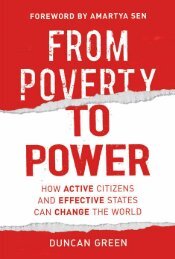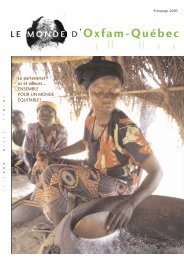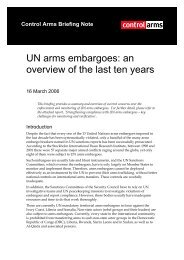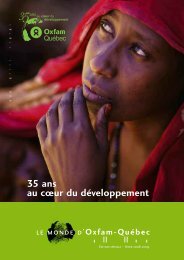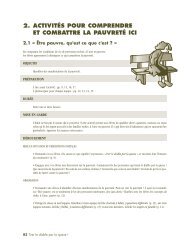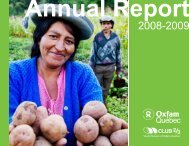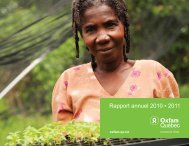Africa's Missing Billions - Oxfam International
Africa's Missing Billions - Oxfam International
Africa's Missing Billions - Oxfam International
Create successful ePaper yourself
Turn your PDF publications into a flip-book with our unique Google optimized e-Paper software.
Appendix: Methodology for cost toAfrica calculationThe methodology used is very similar to that used by Stewart andFitzgerald of the University of Oxford in War and Underdevelopment(2001). 129 We have also taken advice from academics and experts,including Anke Hoeffler of the Centre for the Study of AfricanEconomies at Oxford University and Graham Harrison of theUniversity of Sheffield.The calculation was done as follows:1. Determining where and when conflicts happened in Africa from1990. The basic source of data used was the Heidelberg Institute for<strong>International</strong> Conflict Research (HIIK)’s register of conflicts (newmethodology, not yet published) which does not rely on a narrowdefinition of combat deaths. 130 Of HIIK’s five levels of violence, weused a ‘severe crisis’ (level 4) or a ‘war’ (level 5). These results werecross-checked against the Uppsala Conflict Data Program 131 andother sources such as the BBC, The Economist, and the UN’s IRIN.2. Predicting what GDP should have been (the counterfactual). Eachconflict country was assigned to a broad economic grouping usingWorld Bank categories: low income, low-middle income or uppermiddleincome. 132 The GDPs of all countries (constant year 2000 $)were taken from the World Development Indicators. 133 It should benoted that data may not be totally reliable and in some cases isdependent on estimates. For each grouping, the annual growth ratewas calculated for each year, 1990–2005.3. Calculating a measure of the cost of conflict = the cumulative lossin GDP. Starting with the GDP at the beginning of the conflict, thegrowth rate of the economic grouping was applied for every year thatthe country was in conflict. The difference between the predictedGDP and the actual GDP was calculated for each conflict year andsummed.Limitations to this methodologyThere is no perfectly accurate way of developing the counterfactual;however, our method is reasonable and reflects the typicalperformance of a country of that economic level. The large number ofcountries in each economic group (around 45) smoothes peculiaritiesdue to particular countries. As a form of comparison and verification,we have used other counterfactuals (for example, predicting a28Africa’s missing billions, IANSA, <strong>Oxfam</strong>, and Saferworld, October2007




